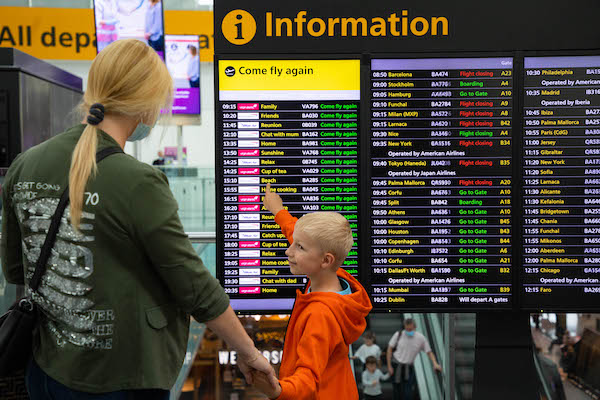The International Air Transport Association (IATA) has reported a significant 8% rise in global air passenger traffic this July. However, this positive trend is overshadowed by concerns over capacity limitations due to ongoing supply chain issues.
As the airline industry experiences unprecedented passenger demand, key challenges in aircraft manufacturing and supply chains threaten to hinder growth. IATA’s latest data underscores the delicate balance between rising passenger numbers and the industry’s ability to meet them effectively.
Increase in Air Traffic Amidst Capacity Challenges
In July 2024, the International Air Transport Association (IATA) reported an 8% increase in global passenger traffic compared to the previous year. This growth slightly exceeded the 7.4% rise in global capacity. However, IATA warned of potential constraints due to ongoing supply chain issues affecting aircraft manufacturing and maintenance.
Director General Willie Walsh highlighted that the industry reached an all-time high in passenger demand across all regions, except Africa. Yet, the persistent bottlenecks in the supply chain pose significant challenges in scaling up capacity to meet this demand adequately.
Regional Performance and Variations
The Asia-Pacific region experienced notable growth, with a 19% increase in passenger traffic, though this was slightly behind the capacity growth of just over 20%. IATA noted that most routes in this region have yet to surpass 2019 passenger levels.
In Europe, both demand and capacity increased by 8%, maintaining a balanced growth. Meanwhile, Middle Eastern carriers recorded a nearly 6% rise in demand, slightly outpacing the capacity growth of 5.5%.
North American airlines saw a 6.3% increase in capacity. Yet, demand grew only by 5.3%, leading to a slight decrease compared to capacity expansion.
Latin America witnessed a robust 13% rise in demand, alongside an almost 16% increase in capacity. In Africa, demand exceeded capacity growth by 0.7 percentage points, with more than 7% growth reported.
Impact of Supply Chain and Manufacturing Delays
Manufacturing delays, particularly at Boeing, continue to plague the industry as the US Federal Aviation Administration addresses safety concerns.
Challenges are compounded by engine issues affecting some Airbus A320 models, causing several aircraft to remain grounded for extended periods.
Walsh noted, “Load factors have reached their practicable maximums, but ongoing supply chain bottlenecks make deploying necessary capacity increasingly difficult.”
Domestic vs. International Demand Dynamics
Domestic air travel demand saw substantial growth, especially in key markets such as the United States, China, India, and Brazil. These markets collectively showed a 5% increase in domestic traffic, surpassing the 2.8% capacity growth.
International demand grew by 10% year-on-year, though capacity increased by 10.5%, leading to a slight drop in the average load factor.
Despite significant disruptions caused by a global IT outage on July 19, demand impacts were negligible, according to IATA.
Urgent Calls for Supply Chain Resolution
Walsh has issued an “urgent call” to aircraft manufacturers and their suppliers to address these supply chain challenges. The call for action underscores the pressing need to resolve these issues to meet ongoing growth in passenger demand.
Supply bottlenecks are significantly impacting the industry’s ability to deploy sufficient capacity and maximise load factors, hence emphasising the need for immediate improvements.
Resolving these issues is critical to accommodating current and future growth demands effectively.
Technological Disruptions and Their Effects
The IT outage caused by CrowdStrike systems’ malfunction on July 19 disrupted global technology systems but had minimal impact on aviation demand.
IATA confirmed that despite the disruption, which could have significantly affected operational efficiency, the actual demand for air travel remained stable.
Such incidents highlight the industry’s resilience to technological challenges, although they stress the necessity for robust IT infrastructure.
Prospects for Future Growth and Challenges
IATA remains optimistic about returning to long-term growth trends across various markets, although challenges persist.
With the robust growth witnessed in the Asia-Pacific and Latin America regions, the industry is poised for continued expansion.
However, to sustain this momentum, addressing supply chain constraints and ensuring capacity enhancement remains pivotal.
IATA’s recent findings highlight both the strengths and vulnerabilities of the global airline industry. While passenger demand surges, addressing ongoing supply chain and capacity issues remains crucial to future growth.
Resolving these challenges will be essential for airlines to sustain and capitalise on passenger demand, ensuring the industry can meet evolving market needs effectively.

